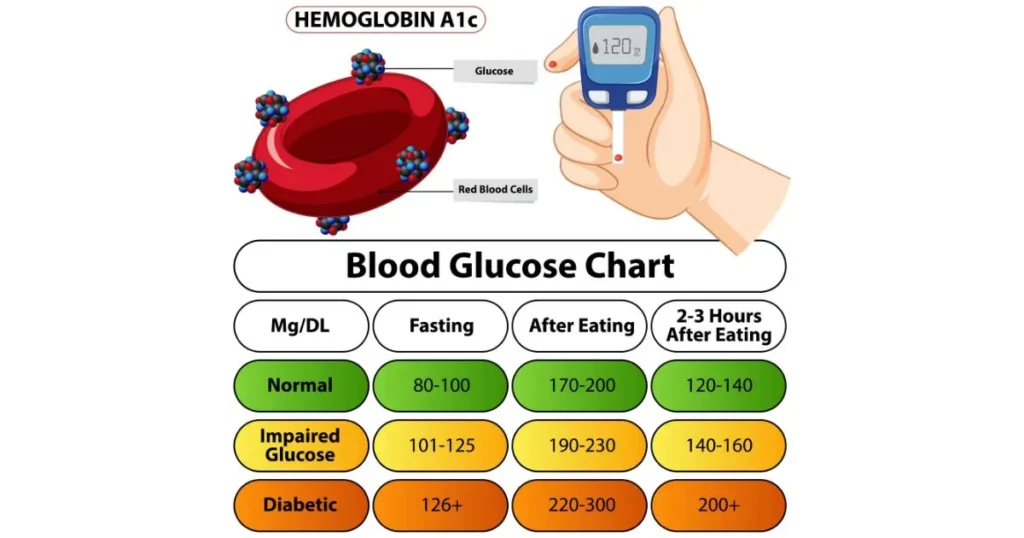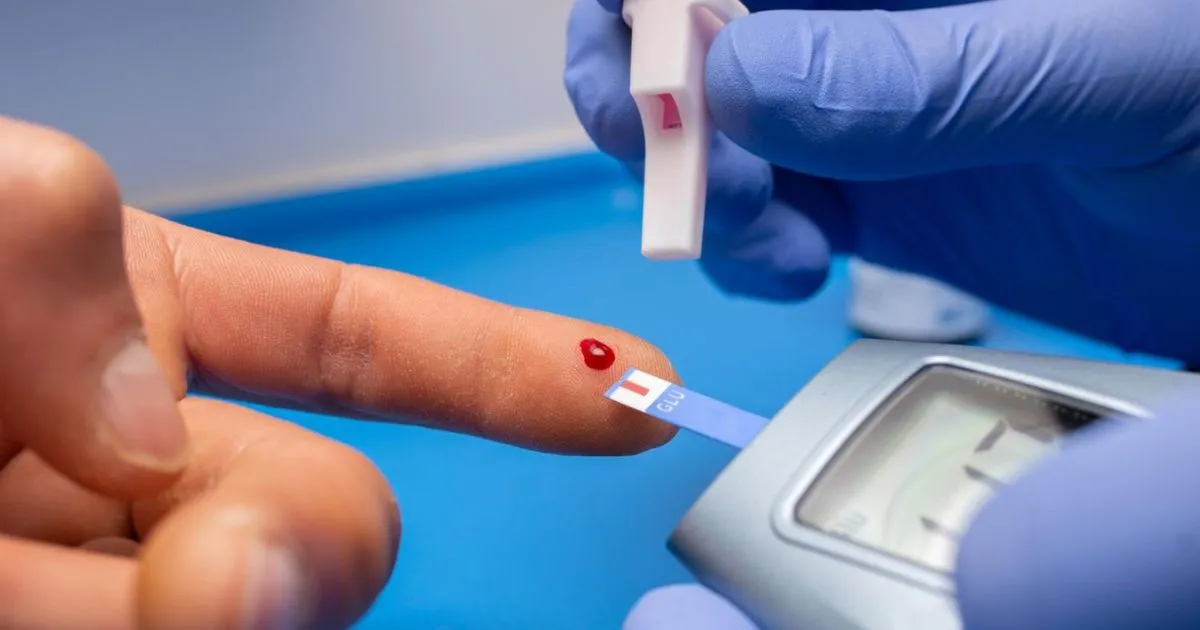Why Your Blood & Sugar Levels Deserve Your Attention
Picture this: you wake up groggy, you grab a sweet pastry with your coffee, and you feel fine — for an hour or two. Then suddenly, you crash. You’re irritable, lightheaded, maybe even shaky. Many people brush this off as just “normal” tiredness or hunger. But what if those daily crashes are really your body’s way of sounding an alarm?
Table of Contents
Your blood and sugar levels hold the keys to more than just your energy. They affect your mood, weight, and risk for diseases you may not even be thinking about yet. If you’ve ever felt like your energy spikes and crashes are out of your control, or you’re just curious about how to protect your health in the long run, you’re in the right place.
This guide breaks down the science in plain language so you can make sense of what’s happening inside you — and what you can do about it.
What Are Blood Sugar Levels, Exactly?
Understanding the Basics

At its simplest, blood sugar is the glucose in your bloodstream. Glucose is a type of sugar that your body uses as its main fuel. After you eat carbs — bread, pasta, rice, fruit — your digestive system breaks them down into glucose. That glucose enters your blood and travels to your cells to be burned as energy.
When your system runs smoothly, it keeps your blood sugar balanced within a narrow, healthy range.
Too high? Your pancreas releases insulin, a hormone that tells your cells to absorb the sugar. Too low? Glucagon, another important hormone, tells your liver to unlock its stored sugar when your blood sugar dips too low.
Normal vs. Unhealthy Levels
So, what counts as normal?
| Test Type | Healthy Range | Pre-Diabetes | Diabetes |
| Fasting Blood Sugar (FBS) | 70–99 mg/dL | 100–125 mg/dL | 126 mg/dL or higher |
| A1C (3-Month Average) | Below 5.7% | 5.7%–6.4% | 6.5% or higher |
(Source: American Diabetes Association)
Keeping these numbers within the healthy range means your body is doing its job balancing blood & sugar — but when that balance is off, problems begin.
How Blood Sugar Levels Shape Your Day-to-Day Health
Short-Term Effects You’ll Notice
If your blood sugar shoots up too high or drops too low, you’ll notice it right away:
- Sudden fatigue.
- Brain fog or trouble concentrating.
- Dizziness or shaking.
- Mood swings and irritability.
- Intense cravings for sweets or carbs.
These sugar swings sap your energy, mess with your focus, and can even impact your mood and connections with others. Over time, they may push you toward bigger health risks.
The Long-Term Price of Imbalance
If your body frequently struggles to manage blood sugar, you’re at higher risk for:
- Type 2 Diabetes: High sugar levels overwork your pancreas until it can’t keep up.
- Heart Disease: High glucose damages your blood vessel walls, leading to inflammation and plaque.
- Kidney Damage: Excess sugar makes your kidneys filter harder, leading to possible damage.
- Nerve Issues: Consistently high sugar can harm the nerves in your hands, feet, and organs.
According to the Mayo Clinic, these conditions can sneak up quietly — making prevention and monitoring vital.
How Your Body Manages Blood & Sugar: The Inside Story
Blood as the Delivery Highway
Your blood is more than red fluid — it’s the transport system that carries oxygen, nutrients, and, of course, glucose. Whenever you have a meal, your blood sugar goes up as your body digests the food. Insulin acts like a key, unlocking your cells so they can absorb that sugar and use it for energy.
If you eat more sugar than your body needs right away, insulin helps store the excess in your liver and muscles. When you’re between meals or sleeping, your body taps these reserves to keep your energy steady.
Hormones in the Driver’s Seat
While insulin gets most of the spotlight, it’s not alone:
- Glucagon releases stored sugar when levels drop too low.
- Cortisol (the stress hormone) can raise your blood sugar during “fight or flight” moments.
- Adrenaline also spikes sugar if your body senses a threat.
This balance keeps you functioning unless something throws it off.
How to Spot a Blood Sugar Imbalance Before It Gets Serious
Most people live with mild imbalances for years without realizing it. Knowing the signs can help you catch trouble early.
Warning Signs You Shouldn’t Ignore
- Feeling thirsty all the time.
- Needing to urinate more often, especially at night.
- Sudden weight loss without trying.
- Cuts and bruises that heal slowly.
- Tingling or numbness in hands or feet.
These signs mean it’s time to talk to a doctor. Don’t self-diagnose — a quick blood test can tell you exactly where you stand.
Monitoring: How You Can Check Your Blood & Sugar
Testing Options
You don’t have to wait for your annual check-up to know your numbers. Many people use home glucose meters to track daily levels. Here’s how:
- Fasting Test: Check your sugar first thing in the morning before eating.
- Post-Meal Test: Measure 1–2 hours after eating to see how your body handles carbs.
Key Tip: Keep a simple log of your readings, what you ate, and how you felt. Over time, you’ll spot patterns that can help you tweak your diet or routine.
How to Keep Your Blood & Sugar in the Safe Zone
The good news? You have more control than you think.
Smart Eating for Balanced Sugar
What you eat has the biggest impact on your blood sugar. Here’s what works:

✅ Eat Fiber-Rich Foods: like veggies, beans, and whole grains — to help your body absorb sugar more gradually.
✅ Prioritize Protein: Chicken, fish, eggs, or tofu help stabilize sugar levels.
✅ Choose Complex Carbs: Brown rice, oats, and sweet potatoes break down slower than white bread or pastries.
✅ Cut back on extra sugars: read labels carefully to spot sneaky sugar in dressings, beverages, and packaged snacks.
✅ Stay Hydrated: Water helps your kidneys flush out excess sugar.
Lifestyle Habits That Help
- Move Your Body: Walking for 15–30 minutes after meals helps your muscles use sugar.
- Manage Stress: Try deep breathing, yoga, or journaling — stress hormones can spike sugar.
- Prioritize Sleep: Poor sleep messes with insulin and hunger hormones.
Small daily habits add up — consistency beats perfection.
When Medication Becomes Part of the Plan
Sometimes, lifestyle tweaks aren’t enough. If your doctor recommends medication, take it exactly as prescribed. Many people hesitate or stop meds when they feel better, but blood sugar issues don’t fix themselves overnight.
Common treatments include:
- Oral meds to help your body use insulin better.
- Insulin injections if your pancreas needs help.
- Newer treatments like GLP-1 agonists to control sugar and support weight loss.
Again, always follow your doctor’s plan.
FAQs: Your Blood & Sugar Questions Answered
What’s a dangerously high blood sugar level?
For most adults, a reading over 180 mg/dL two hours after eating may signal trouble. Over 240 mg/dL? Seek medical help — especially if you have symptoms like confusion or shortness of breath.
Can stress really raise my blood sugar?
Yes. Stress hormones tell your liver to release extra sugar for quick energy — useful if you’re running from a tiger, not so helpful when you’re stuck in traffic.
How often should you check your blood sugar?
If you’re healthy, an annual fasting glucose test might be enough. If you’re at risk (family history, overweight, high blood pressure), your doctor may suggest more frequent checks.
Trusted Medical Resources
When you research blood & sugar levels, stick to reliable sites like:
Never rely on unverified blogs for diagnosis — your health deserves facts, not guesses.
Conclusion: Take Charge of Your Blood & Sugar Today
Your blood sugar isn’t just a number — it’s a window into how well your body fuels you. By learning how your blood & sugar levels work together, recognizing the warning signs, and making small but powerful daily choices, you can feel more energized, protect your heart, and avoid hidden health risks.
If you take one thing away today, let it be this: You have the power to steer your health in the right direction — starting now.
Your Next Step: If you found this helpful, share it with a friend who might need it too. And don’t forget — schedule that blood sugar check with your doctor this month. Your future self will thank you.
Disclaimer: This article is for educational purposes only and does not replace professional medical advice. Always consult a qualified healthcare provider about your health.

